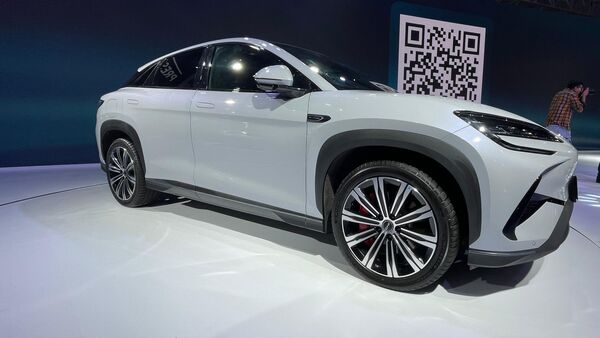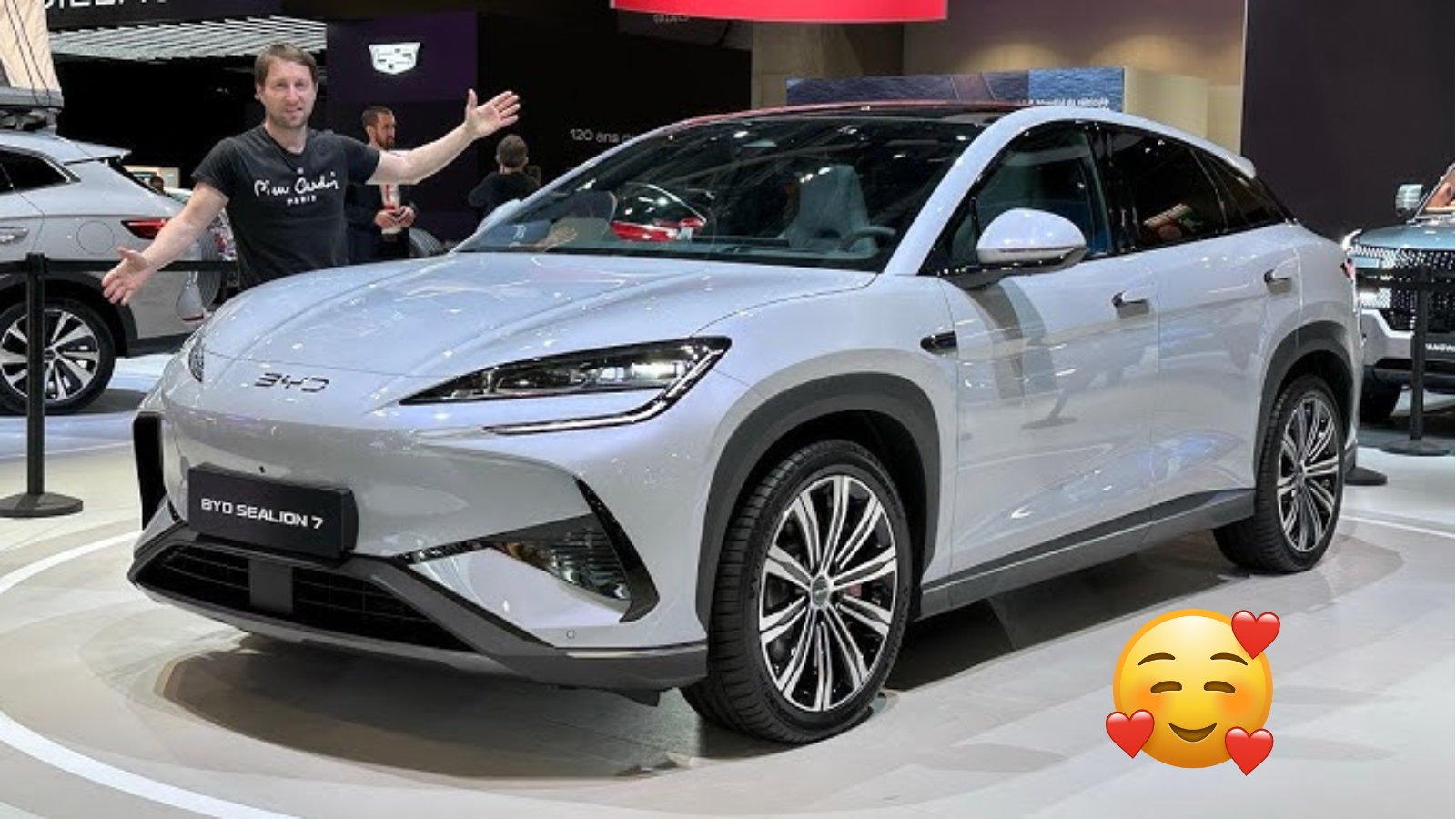Australian families looking for a spacious, efficient SUV have something exciting to look forward to. The BYD Sealion 8 is heading to our shores in early 2026, marking a significant milestone as the Chinese automaker’s first seven-seat SUV available locally. This isn’t just another SUV launch – it represents BYD’s serious commitment to expanding beyond their current five-seat offerings.
If you’ve been watching BYD’s rapid growth in Australia, you’ll know they’ve been making waves with models like the Shark 6 ute and Sealion 6 PHEV. Now they’re targeting families who need more space without sacrificing efficiency.

Why the Sealion 8 Matters for Australian Families
The Sealion 8 addresses a specific gap in BYD’s current lineup. While the Sealion 7 serves mid-size families well, larger households have been waiting for something bigger. This new SUV delivers exactly that, offering genuine seven-seat capacity in a traditional 2+3+2 configuration that actually works for real families.
What sets this apart from other large SUVs is its plug-in hybrid technology. Rather than choosing between fuel efficiency and space, the Sealion 8 promises both. This matters when you’re doing the school run, weekend sports trips, or family holidays – situations where you need space but don’t want to break the bank on fuel costs.
The timing couldn’t be better. With fuel prices remaining high and more families considering electrified vehicles, a seven-seat PHEV that can handle daily commutes on electric power alone makes perfect sense.
Two Powertrains to Match Your Driving Style
DM-i: The Efficiency Champion
The standard Sealion 8 uses BYD’s DM-i powertrain, combining a 110kW turbocharged 1.5-litre petrol engine with a 200kW front electric motor. This setup prioritizes efficiency and smooth operation – perfect for families who want hybrid benefits without paying premium prices.
With a 19kWh battery pack, you’ll get decent electric-only range for daily driving. The 0-100km/h time of 8.6 seconds might not sound thrilling, but it’s perfectly adequate for a family SUV carrying seven people and their gear.
DM-P: Performance Meets Practicality
For those wanting more excitement, the DM-P variant adds a second 141kW rear motor, creating an all-wheel-drive system with 400kW and 670Nm combined output. This transforms the Sealion 8 into something quite special – a seven-seat SUV that reaches 100km/h in just 4.9 seconds.
The DM-P also gets a larger 35.6kWh battery, providing 150km of electric-only range under China’s testing standards. Real-world range will likely be lower, but still sufficient for most daily commutes without using petrol.
Both versions support 71kW DC fast charging, allowing 30-80% battery top-ups in 30 minutes – handy for longer trips.
Interior Technology and Comfort
Space That Actually Works
With dimensions of 5040mm long, 1996mm wide, and 1760mm high, the Sealion 8 offers genuinely usable space. The 2950mm wheelbase is 100mm longer than a Toyota Kluger’s, translating to more legroom for second and third-row passengers.
Boot space starts at 675 litres with all seats up, expanding to 960L with the third row folded, and 1960L behind the front seats. These numbers suggest you won’t need a roof box for family holidays.
Tech That Makes Sense
The 15.6-inch rotating touchscreen is becoming a BYD signature feature. Whether you prefer landscape for navigation or portrait for other functions, you can adjust it to suit your needs. A 12.3-inch digital instrument cluster and head-up display keep important information where you need it.
The DiPilot 300 autonomous driving suite uses impressive hardware: one LiDAR sensor, five radars, 12 ultrasonic sensors, and 12 cameras. This enables adaptive cruise control, lane-keeping assistance, and other safety features that make long drives less tiring.
Chinese specifications include leather seats, a 2.39m panoramic glass roof covering all three rows, 11 airbags, and a 21-speaker surround sound system in top variants. Australian specifications haven’t been confirmed, but similar equipment levels are expected.
How It Stacks Against the Competition
Direct Rivals
The Sealion 8 will primarily compete against other seven-seat PHEV SUVs including the Kia Sorento PHEV and Mazda CX-80 PHEV. Both offer proven reliability and established dealer networks, but the Sealion 8 counters with newer technology and potentially more competitive pricing.
The upcoming Chery Tiggo 9 (arriving September 2025) and potential MG QS PHEV variant will also compete for similar buyers. However, the Sealion 8’s advanced driver assistance features and battery technology could provide advantages.
Size Comparison
Against the popular Toyota Kluger, the Sealion 8 offers similar exterior dimensions but superior interior space thanks to its longer wheelbase. The hybrid powertrain also provides significantly better fuel efficiency than the Kluger’s V6 engine.
Pricing and Availability Expectations
When Can You Buy One?
BYD Australia has confirmed the Sealion 8 will arrive in the first quarter of 2026 (January-March). This gives the company time to establish their new direct sales model, which began in July 2025.
Pricing Strategy
While official pricing hasn’t been announced, BYD has indicated the Sealion 8 won’t be their most expensive model – that distinction remains with the Sealion 7 EV, currently priced from $63,990 plus on-road costs.
Given the PHEV technology and seven-seat capacity, expect pricing to be competitive with established rivals while undercutting premium European alternatives.
Specifications at a Glance
| Specification | Details |
|---|---|
| Length | 5040mm |
| Width | 1996mm |
| Height | 1760mm |
| Wheelbase | 2950mm |
| Seating | Seven seats (2+3+2) |
| Boot Space | 675L (all seats up) |
| DM-i Power | 110kW petrol + 200kW electric |
| DM-P Power | 400kW / 670Nm combined |
| 0-100km/h (DM-P) | 4.9 seconds |
| 0-100km/h (DM-i) | 8.6 seconds |
| Electric Range | 150km (CLTC) |
| Battery Capacity | 19kWh (DM-i) / 35.6kWh (DM-P) |
| Fast Charging | 71kW DC |
| Screen Size | 15.6-inch rotating display |
What This Means for BYD’s Australian Future
The Sealion 8 represents more than just another model launch. It demonstrates BYD’s commitment to the Australian market and their understanding of local family needs. With their recent 95% year-to-date sales increase, adding a seven-seat SUV could accelerate this growth further.
The combination of PHEV efficiency, genuine seven-seat practicality, and competitive pricing positions the Sealion 8 as a serious alternative to established players. For families tired of choosing between space and efficiency, this could be the solution they’ve been waiting for.
Frequently Asked Questions
Q: When will the BYD Sealion 8 be available in Australia?
A: The Sealion 8 is scheduled to arrive in the first quarter of 2026 (January-March).
Q: How many seats does the Sealion 8 have?
A: It offers seven seats in a 2+3+2 configuration – BYD’s first seven-seat SUV in Australia.
Q: What’s the electric-only range?
A: The DM-P variant offers 150km electric range (CLTC standard), while the DM-i has a smaller battery with reduced range.
Ford Maverick Outselling Hyundai Santa Cruz in 2025 U.S. Market
